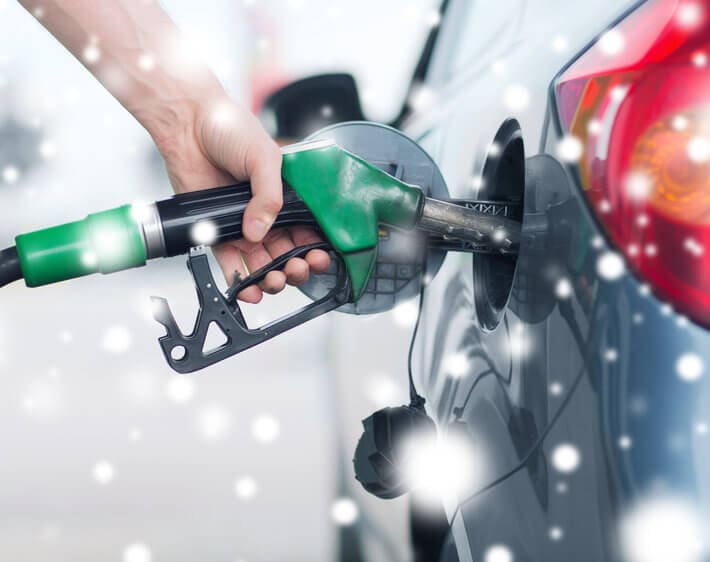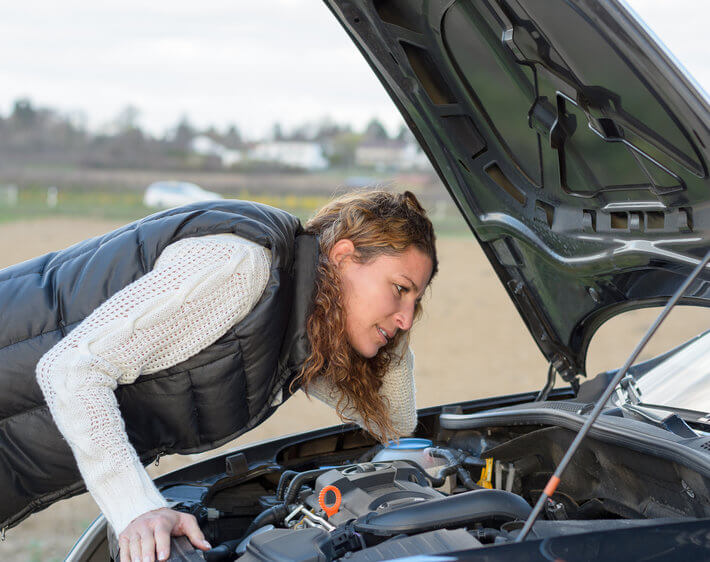Winter temperatures can take a toll on your vehicle’s fuel efficiency. In fact, according to FuelEconomy.gov, gas mileage on conventional vehicles is about 12% lower at 20 degrees than it is at 77 degrees—that’s a huge difference! For hybrid vehicles, fuel economy drops even more dramatically in cold weather. Learn why this gap in fuel efficiency exists in the winter, and save yourself some money with a few helpful strategies for winter vehicle care!
1. Combine your errands and trips, rather than taking several drives throughout the day.
In cold weather, your vehicle’s engine can take longer to reach its most fuel-efficient temperature. Make life easier on it! Combine trips to avoid making your engine heat up multiple times a day. Run errands on the way to or from work, or on the way to pick up the kids. Your engine won’t cool completely between stops, meaning it won’t use as much fuel to heat back up. Combining your trips and reducing the number of individual drives could save you from wasting unnecessary fuel and lowering your gas mileage.
2. Remove accessories that can increase wind resistance.
Although your vehicle’s roof rack may have been put to good use this summer, it could be undermining your fuel economy now that winter is here. A large roof-top cargo box can reduce fuel economy by 2% to 8% in city driving, and 6% to 17% on the highway, reports FuelEconomy.gov. Ditch the accessories and watch your fuel efficiency improve.
3. Try to park in a warm place.
If you have a garage, use it! Parking your vehicle inside rather than out in the driveway can help you conserve fuel. Your engine will stay slightly warmer in the garage than it would if you park outside in the elements. There are two major benefits to this: it will reduce the time needed for your engine to warm to a fuel-efficient temperature, and it will save you from needing to use a defrosting feature in your vehicle that can lead to getting fewer miles per gallon.
4. Don’t let your car idle for long periods of time to warm it up.
If you’ve gotten into the habit of starting your car 10 or more minutes before you need to leave, it’s time to change that habit. Many of us have been taught that allowing the engine to idle will "warm it up." While true, most manufacturers say it’s actually no longer necessary. Instead, start your engine, wait 30 seconds, and then gently drive away to warm the engine gradually without wasting fuel.
5. Monitor your tire pressure.
To ensure that your vehicle is getting the maximum fuel economy possible, keep a close eye on your tire pressure. Winter temperatures can cause changes in tire pressure and those changes can hurt your fuel efficiency. Take care of your engine—and your gas budget—by checking your tire pressure often and inflating as necessary.
6. Check the grade and type of motor oil in your vehicle.
Your engine may need a different motor oil for different seasons, and using the right motor oil for your vehicle can reduce wear and risk of damage to your engine in cold temperatures. During the coldest months, look for a full synthetic motor oil with the lowest possible “0W” winter rating. This will provide the best protection for cold starts. Stop by for an oil change at your local Firestone Complete Auto Care to ensure your car is using the best motor oil for cold weather driving!
Need to put a freeze on your fuel spending? Follow these everyday tips and tricks to maximize fuel economy. If you need help, the trained technicians at your nearest Firestone Complete Auto Care are ready to help you winterize your car. With everything from tire pressure checks and refills to recommendations for the right motor oil, we'll keep your engine running smoothly this winter and for many winters to come. Schedule an appointment today!



